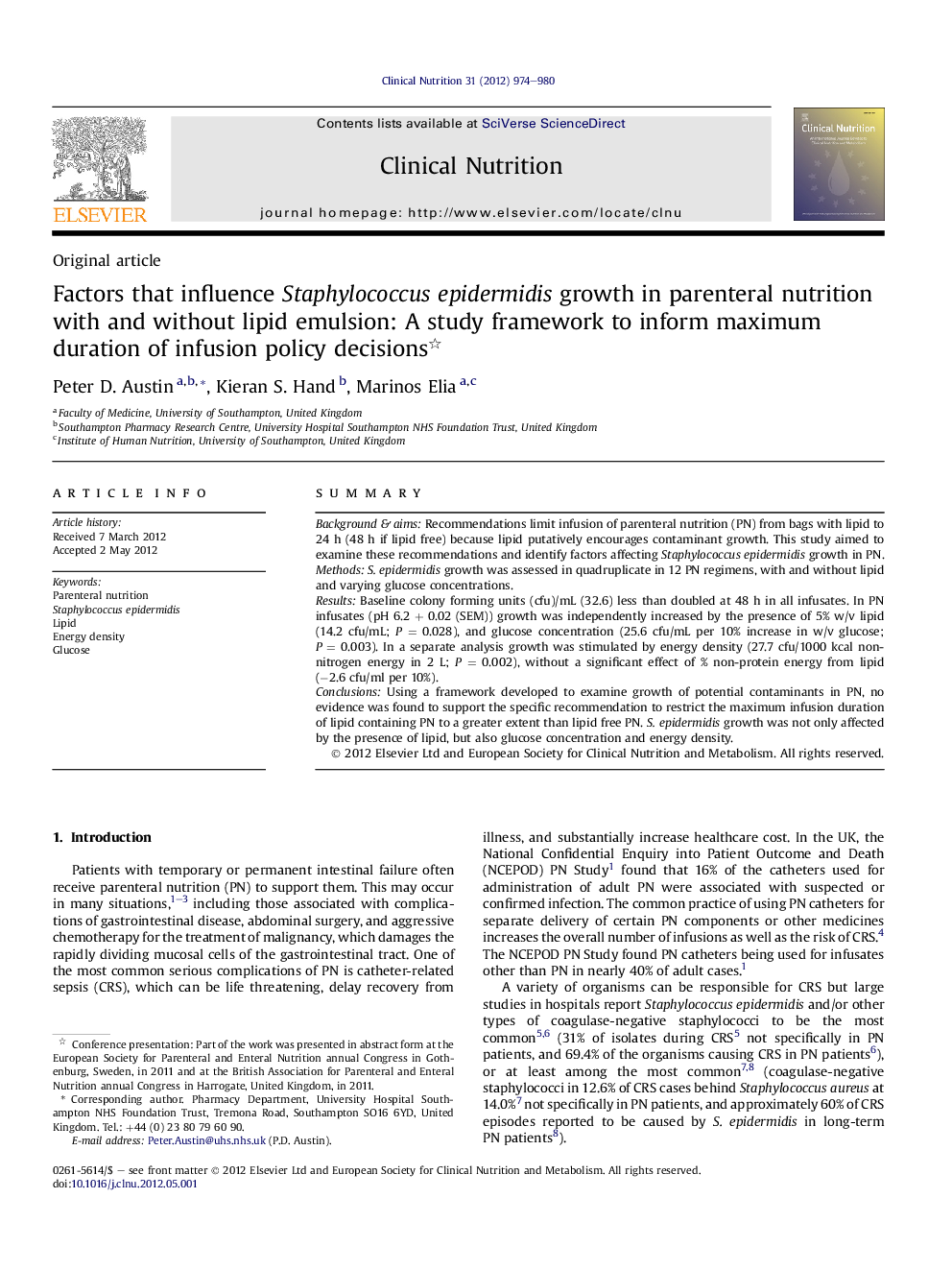| Article ID | Journal | Published Year | Pages | File Type |
|---|---|---|---|---|
| 2683031 | Clinical Nutrition | 2012 | 7 Pages |
SummaryBackground & aimsRecommendations limit infusion of parenteral nutrition (PN) from bags with lipid to 24 h (48 h if lipid free) because lipid putatively encourages contaminant growth. This study aimed to examine these recommendations and identify factors affecting Staphylococcus epidermidis growth in PN.MethodsS. epidermidis growth was assessed in quadruplicate in 12 PN regimens, with and without lipid and varying glucose concentrations.ResultsBaseline colony forming units (cfu)/mL (32.6) less than doubled at 48 h in all infusates. In PN infusates (pH 6.2 + 0.02 (SEM)) growth was independently increased by the presence of 5% w/v lipid (14.2 cfu/mL; P = 0.028), and glucose concentration (25.6 cfu/mL per 10% increase in w/v glucose; P = 0.003). In a separate analysis growth was stimulated by energy density (27.7 cfu/1000 kcal non-nitrogen energy in 2 L; P = 0.002), without a significant effect of % non-protein energy from lipid (−2.6 cfu/ml per 10%).ConclusionsUsing a framework developed to examine growth of potential contaminants in PN, no evidence was found to support the specific recommendation to restrict the maximum infusion duration of lipid containing PN to a greater extent than lipid free PN. S. epidermidis growth was not only affected by the presence of lipid, but also glucose concentration and energy density.
